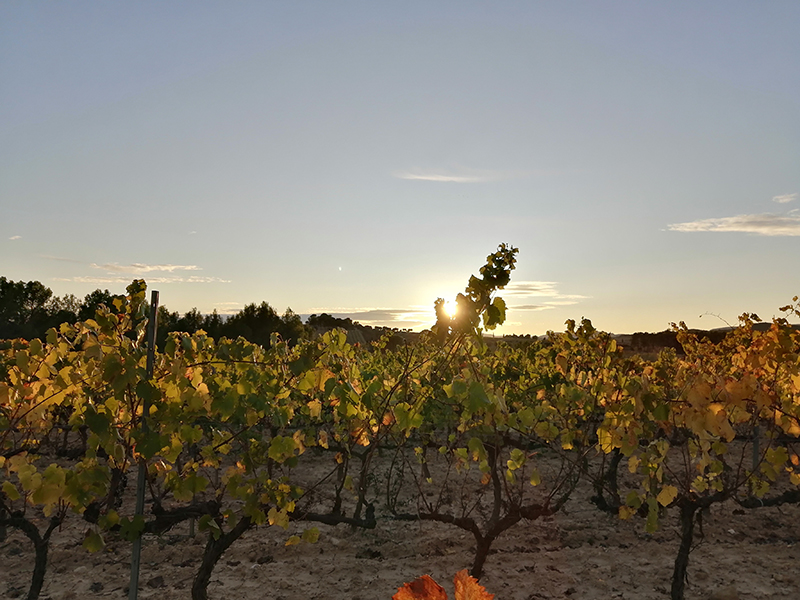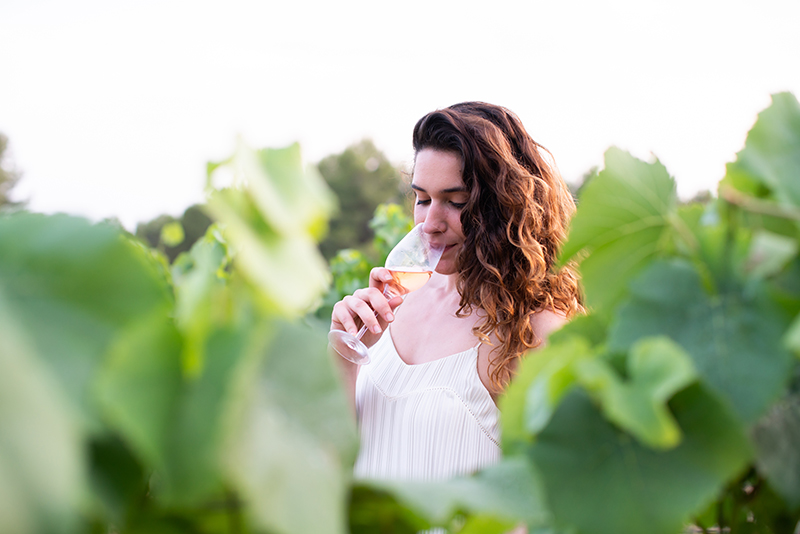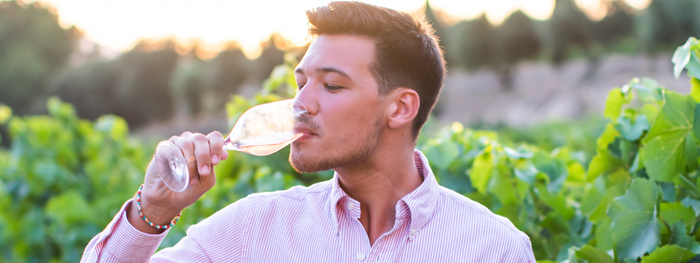Sommeliers, those people who make a great ritual when they taste a cava and use expressions such as unctuous, fine bubbles, aromas of pastries … But sommeliers are experts and their work goes far beyond tastings. Thanks to them, we can enjoy unique and special cavas, for their intervention in processes such as coupages, for example. But if you want to put yourself in the shoes of a sommelier and learn how to taste a cava, this post is for you. We will explain everything you need to know to taste a cava well and what those famous expressions they use mean.
But first there are 4 things you should know in order to do a more judicious tasting. Let’s see them!
1. Cava categories according to aging
Aging is the period that begins after the second fermentation, in which the cava rests inside the bottle, covered with a crown-type cap (like that of a Coca-Cola bottle), so that the yeasts settle into the bottle. bottle body. For the elaboration of the cava according to the traditional method, at least nine months of aging are necessary. Side. Cava establishes a series of categories depending on the aging time:
> Cavas with an aging period of between 9 and 18 months are called “de Guarda”.
> Cavas with an aging period of more than 18 months are “de Guarda Superior”. Within this category we find:
>> Reserva: from 18 to 30 months of aging.
>> The Gran Reserva: with a minimum of 30 months of aging.
And why do we tell you all this? Because the aging time determines the quality of the cava: in this process the magical bubbles are formed, later we will talk about them, and also the aromas of yeasts and toasts. When tasting a cava we will notice the influence of the aging: surely, a large reserve will have a finer and more integrated bubble than a cellar cava, among other differences.
2. Types of cava according to sugar
Another thing we should know is that there are cavas that after disgorgement, sugar is added. Side. Cava establishes different typologies according to the added sugar:
> Brut nature cavas, without added sugar.
> Brut cavas carry a maximum of 12 g / l.
> Dry cavas, between 17 and 30 grams per liter.
> Sweet cavas have more than 50g / l. Thus, it will be easy to notice that sweetness in dry or sweet cavas. The gran reserva can only be of the gross or brut nature type. In this case, we will find the sweet notes due to the dialect character and the upbringing.
3. The grape varieties
Usually in cavas we find the famous cava triplet: xarel lo, macabeu and parellada. This combination gives rise to many cavas, but at Naveran we like to innovate and use other varieties authorized by the D.O. Cava like pinot noir or chardonnay. Our Perles Roses and Perles d’Or cavas are 100% Pinot Noir and xarel·lo, respectively.
The combination of varieties creates unique flavors and aromas for each cava, which we will have to discover through the tasting. However, each variety has its characteristics that we can identify. Here are some examples:
Chardonnay: this variety provides aromas of tropical, powerful and fresh fruits. The acidity is balanced with the point of sweetness and these more exotic aromas.
Parellada: the aromas are more delicate and floral, they bring freshness. The acidity is light.
Macabeu: we will also notice the fruity and soft aromas. It has a good balance between sugar and acidity.
Xarel·lo: it is harvested greener when we want a base wine to make cava, to achieve a fruity balance.
Pinot noir: it is a very special variety, among other reasons, because it makes the bubbles rise to the top and form the famous foam crown; allowing these to stay in the glass. The aromas are fine, that is, they are subtle but pleasant.

4. Things to keep in mind to serve cava well:
> The temperature must be adequate
We must be careful not to serve cavas too cold, especially reserva and gran reserva: they could lose their organoleptic properties and when tasting them, we would not fully enjoy the aromatic subtleties. To properly cool a cava, it is best to put it 24 hours before serving it in the fridge, at a very cold temperature. We will never put the cava in the freezer. Once it is time to serve, it will be very useful to have an ice bucket.
> How to open the bottle? You were doing it the other way around.
Once the muzzle and plate are removed, the best way to open the cava is to place your right hand on the bottom of the bottle and your left on the top (if you are left-handed, the other way around). So, it’s a matter of turning: from the bottom of the bottle and little by little. Sometimes it may take a while, especially if it is too cold. Patience, it is not necessary to exert more force of the account, the cap will end up giving.
> What is the ideal cup?
There is a glass for each type of cava: for young people, aging cavas, the tulip glass is used, the typical narrow base glass that grows on the trunk and ends a little more closed. On the other hand, to taste cavas of longer aging (aging and aging), a larger glass is normally used, to appreciate the aromas more.
> How are we to put the cava in the glass?
It is always better to tilt the glass a little, so that the cava slides down the walls of the glass and does not foam so much, so that the carbon does not go away. The other famous question is how far the cup should be filled: 20% would be a good measure. Ah! Another tip is not to fill the glass at once, better to do it two or three times.

And now, let’s try the cava!
We will do it in 3 steps:
1. Visual examination
We will begin to taste cava through the sense of sight. They already say it, that food enters through the eyes! In this phase, it is about analyzing the cava through the bubble and the color. We can gently stir the glass and observe it with a nearby light source, to discover its reflections.
An integrated bubble: cavas that have a long aging period have an integrated bubble, that is, a fine bubble that has formed naturally, slowly, with aging. For example, think of carbonated drinks – they have larger, more random bubbles. On the other hand, the bubbles of a cava will be finer and will rise to the surface, forming a crown, if the bubble is very well structured. In these cases, the expression “has very good carbonic behavior” is used.
The color will be determined by the variety, the maceration, the blends and, also, the aging, that is why the color of each cava will be unique and special. However, we can give you a trick: pink cavas show pale pink or amber tones and reflections that are reminiscent of the color of an onion skin. Cavas that have a blend with Xarello and Chardonnay have pale yellow tones with greenish reflections.
2. Olfactory test
Here you will think that things are complicated, but you only have to be attentive to your senses. If you cannot distinguish different aromas from the outset, it is simply a matter of relaxing: it is a matter of testing, since the senses must get used to and discern among all the stimuli they receive.
It is recommended to do a first tasting with the glass still and then a second, after gently stirring the glass; thus we can differentiate the primary aromas from the secondary ones. In the first phase, we will find the varietal notes, such as those that we have explained to you previously.
In the second phase, if the cava is aged for a long time, we will find the aromas of yeasts, bread, toasts, pastries … that give us the fermentation and the aging time. When we can notice this mixture, for example, between more exotic aromas and toasted bread, we speak of complex aromas.
However, the aromas of a good cava are subtle, fine, light, that is, they integrate with each other: none of them overpowering and affecting the flavor of the cava. When we smell a young cava, surely, in the two phases we will notice more similar aromas.
3. Taste test
And now we come to the decisive moment, we can finally taste the cava.
What are we looking for?
First, the balance: a cava can have unique aromas and flavors, but these must be integrated (we do not want to find any in a too dominant way). However, the final flavor can be powerful and complex. Balance between acidity, sweetness and alcohol, between freshness and body, between varietal notes and the tastes of aging. All the elements that make up the balance will be the ones that add complexity.
Later, we will look for if it has volume in the mouth, this is when we will say that it is an unctuous cava.
And to finish, related to the final impression: the unctuousness is what will lead us to persistence, that is, the taste of the cava remains in the mouth once we have drunk it. If this happens, we will say that it is long in the mouth.
Pay attention to your senses!
Tasting a cava is not complicated, it is a matter of listening to what our senses tell us and relating it to notions about the varieties, the type of cava, the aging time … You will surely discover many more nuances than you had imagined! Do you dare to try it?



